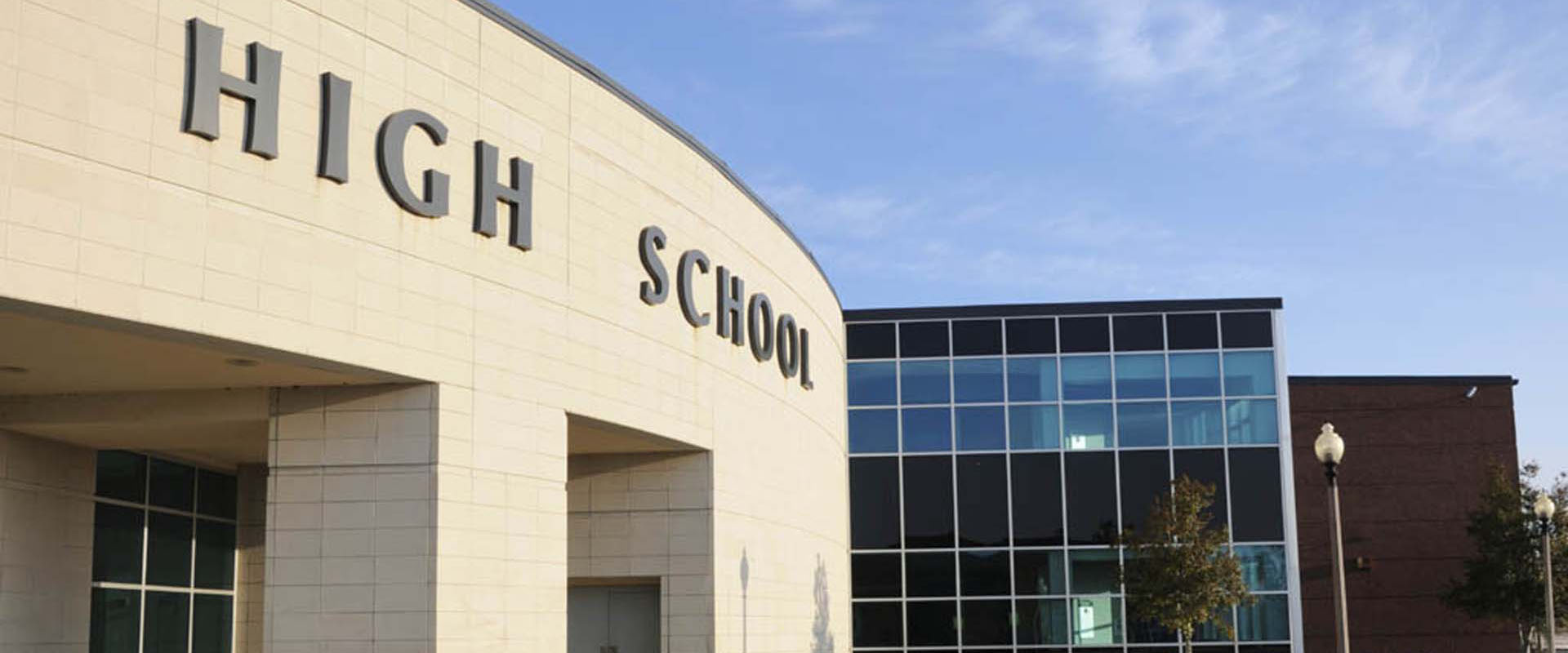AB 48 Increases Bonding Capacity, Provides Facilities Funding At Multiple Levels, Prioritizes Small School Districts, And Reduces Available Developer Fees For School Districts ... But Only Applies If Voters Approve A School Facilities Bond In March

October 2019
Number 62
The California Legislature recently passed, and on October 7 Governor Newsom signed, Assembly Bill (AB) 48, known as the "Public Preschool, K-12, and College Health and Safety Bond Act of 2020."
AB 48 places a $15 billion statewide K-12 school and college facilities general obligation bond on the March 3, 2020 ballot.
Contingent on voter approval of the statewide bond measure at the Presidential Primary election on March 3, 2020, AB 48 would introduce a slew of significant changes, relative to the funding of school facilities including:
Impact on Developer Fees
In addition to the numerous substantial changes addressed above, AB 48 places new limitations on school districts' ability to obtain the full school impact fees to which they had previously been entitled, retreating on a compromise between developers and school districts that was reached over two decades ago.
In 1997, following years without a new statewide school bond measure, the Legislature reached a compromise that led to Senate Bill (SB) 50, which placed a successful statewide bond on the ballot in 1998 and new restrictions on developer fees. SB 50 limited the ability of a school district to challenge new development on the basis of inadequate school fees, and introduced the three levels of developer fees that remain in effect to this day. School districts may assess residential developer fees authorized by Education Code sections 17620, et seq. ("Level 1" fees), or a higher "Level 2" or "Level 3" rate authorized by Government Code sections 65995.5 et seq., if the district meets certain criteria. The highest level of fees, Level 3, was intended to go into effect when state facility funding was no longer available. To date, school districts have had only fleeting moments to collect Level 3 fees, which have been variously suspended by the Legislature and challenged in court by the California Building Industry Association.
Under AB 48, if the statewide bond measure in 2020 is successful, school impact fees will be eliminated altogether for multifamily housing developments that are located within one-half mile of a major transit stop, which is defined in the legislation as "a site containing an existing rail transit station, a ferry terminal served by either a bus or rail transit service, or the intersection of two or more major bus routes with a frequency of service interval of 15 minutes or less during the morning and afternoon peak commute periods." For all other multifamily housing, AB 48 reduces the amount of Level 1 and Level 2 fees that can be charged by 20%. These changes are presumably to support more affordable housing, though that goal rests, at least in part, on a potentially faulty assumption that developers will pass the savings on to home buyers. These reductions in fees would remain in effect until January 1, 2026.
Additionally, increasing the local bonding capacity for school districts could potentially reduce school impact fees by making it more difficult for a district to qualify for Level 2 fees. This is because qualification for Level 2 fees is dependent, in part, on a school district's bonding capacity. In relevant part, to qualify for Level 2 fees, a district must (1) be eligible for state facility funding, and (2) meet two of four criteria - one of which is directly tied to the district's local bonding capacity (the issuance of debt or incurring obligations for capital outlay in an amount equal to 30 percent of the district's local bonding capacity). (Gov. Code § 65995.5, subd.(b)(3)(C).) By raising school districts' bonding capacity, AB 48 would make it more difficult to meet this particular criteria, potentially causing school districts to fall out of Level 2 status in the future.
Finally, if they go into effect, certain of AB 48's provisions could once again suspend the ability of a school district to impose Level 3 fees even if state facilities funding runs out. This suspension of Level 3 fees would be in place until January 1, 2028.
If the voters approve AB 48 in March, the bill's treatment of developer fees will retreat from the compromise arrangement of SB 50 in each of the foregoing ways. Developers will keep the benefits of that compromise (limits on ability to challenge development based on insufficient school facilities) while school districts give up the full benefits of Level 2 and Level 3 fees.
Takeaway
Importantly, the many changes proposed by AB 48 will not take effect until and unless the voters approve the Public Preschool, K-12, and College Health and Safety Bond Act of 2020 (the Act) on March 3, 2020. If the Act is not approved by voters on March 3, none of the above will apply.
With respect to the effect of some of the changes that will go into effect only if voters approve the Act: AB 48 will provide facilities funding at multiple levels; the state match for funding will be more aligned with LCFF factors, and will also include a "hold harmless" provision to avoid harm caused by the shifting formula; priorities for funds will be based on need rather than a first-in-line-model; specific focus will be paid to small school districts, potentially adversely impacting suburban and larger districts; and some school districts may be adversely impacted by the limitation on the collection of multi-family residential developer fees.
Lozano Smith will soon be releasing an episode of the Lozano Smith Podcast focusing on AB 48 and its potential impacts on school facilities funding in California. Go to Lozanosmith.com/podcast to access all of Lozano Smith's podcasts.
If you have any questions about AB 48, public finance or developer fees in general, please contact the authors of this Client News Brief or an attorney at one of our eight offices located statewide. You can also subscribe to our podcast, follow us on Facebook, Twitter and LinkedIn or download our mobile app. Information regarding Lozano Smith's Developer Fee Handbook for School Facilities can be found Here.
Number 62
The California Legislature recently passed, and on October 7 Governor Newsom signed, Assembly Bill (AB) 48, known as the "Public Preschool, K-12, and College Health and Safety Bond Act of 2020."
AB 48 places a $15 billion statewide K-12 school and college facilities general obligation bond on the March 3, 2020 ballot.
Contingent on voter approval of the statewide bond measure at the Presidential Primary election on March 3, 2020, AB 48 would introduce a slew of significant changes, relative to the funding of school facilities including:
- Increasing the bonding capacity of school and community college districts as follows:
- For elementary and high school districts - from 1.25% to 2.0% of assessed value of the taxable property within the district.
- For unified school districts and community college districts - from 2.5% to 4.0% of assessed value of the taxable property within the district.
- Establishing a 2020 School Facilities Fund for the apportionment and disbursement of money, including AB 48 bond proceeds, pursuant to the Leroy F. Greene School Facilities Act of 1998, commonly known as the School Facility Program;
- Imposing requirements to submit a five-year school facilities master plan or updated five-year school facilities master plan as a condition for participating in the School Facility Program;
- Prioritizing the order in which modernization and new construction applications for participation in the School Facility Program will be processed as follows: to projects that are determined to pose a health of life safety hazard; to projects by school districts requesting financial hardship status; for modernization applications only, to applications requesting a grant for the testing and/or remediation of lead levels in water at school sites; to projects that were submitted but not reviewed in the two immediately preceding quarters; to projects designed to eliminate existing severe overcrowding; and to applications based upon a computation of points as set forth in the Education Code;
- Introducing new programs to lessen the burden on rural and lower-income school districts when applying for state funds, including a small school district assistance program to provide advanced funding for design, reserve funds so districts will have the time needed to develop their projects, technical assistance and an increased bonding capacity to allow more small school districts to receive financing assistance, and increasing the threshold total bonding capacity for the financial hardship eligibility so more districts can qualify for projects without having to raise the full local contribution
- Authorizing
- funding for health and safety projects;
- grants for lead testing and remediation;
- grants for new construction and modernization projects for seismic mitigation, control, management or abatement of lead, the demolishment and construction of buildings on existing school sites in specified situations and to establish school site-based infrastructure to provide broadband internet access;
- Authorizing the use of new construction and modernization grants for the purchase of portable electronic devices with a useful life of more than three years;
- Specifying procedures by which small schools can obtain project and construction management, new construction grants, and modernization grants;
- Providing districts affected by a disaster with immediate assistance;
- Requiring annual notification by school districts to the State Allocation Board of sites that have been acquired for school purposes but remain unused;
- Prioritizing health and safety projects at the higher education level, and requiring the University of California ("UC") and California State University ("CSU") to adopt five-year affordable student housing plans as conditions for funding; and
- Imposing accountability and transparency obligations, such as public hearing and audit requirements, posting project and audit information requirements, on school districts, county offices of education, charter schools, community colleges, the CSU and the UC.
Impact on Developer Fees
In addition to the numerous substantial changes addressed above, AB 48 places new limitations on school districts' ability to obtain the full school impact fees to which they had previously been entitled, retreating on a compromise between developers and school districts that was reached over two decades ago.
In 1997, following years without a new statewide school bond measure, the Legislature reached a compromise that led to Senate Bill (SB) 50, which placed a successful statewide bond on the ballot in 1998 and new restrictions on developer fees. SB 50 limited the ability of a school district to challenge new development on the basis of inadequate school fees, and introduced the three levels of developer fees that remain in effect to this day. School districts may assess residential developer fees authorized by Education Code sections 17620, et seq. ("Level 1" fees), or a higher "Level 2" or "Level 3" rate authorized by Government Code sections 65995.5 et seq., if the district meets certain criteria. The highest level of fees, Level 3, was intended to go into effect when state facility funding was no longer available. To date, school districts have had only fleeting moments to collect Level 3 fees, which have been variously suspended by the Legislature and challenged in court by the California Building Industry Association.
Under AB 48, if the statewide bond measure in 2020 is successful, school impact fees will be eliminated altogether for multifamily housing developments that are located within one-half mile of a major transit stop, which is defined in the legislation as "a site containing an existing rail transit station, a ferry terminal served by either a bus or rail transit service, or the intersection of two or more major bus routes with a frequency of service interval of 15 minutes or less during the morning and afternoon peak commute periods." For all other multifamily housing, AB 48 reduces the amount of Level 1 and Level 2 fees that can be charged by 20%. These changes are presumably to support more affordable housing, though that goal rests, at least in part, on a potentially faulty assumption that developers will pass the savings on to home buyers. These reductions in fees would remain in effect until January 1, 2026.
Additionally, increasing the local bonding capacity for school districts could potentially reduce school impact fees by making it more difficult for a district to qualify for Level 2 fees. This is because qualification for Level 2 fees is dependent, in part, on a school district's bonding capacity. In relevant part, to qualify for Level 2 fees, a district must (1) be eligible for state facility funding, and (2) meet two of four criteria - one of which is directly tied to the district's local bonding capacity (the issuance of debt or incurring obligations for capital outlay in an amount equal to 30 percent of the district's local bonding capacity). (Gov. Code § 65995.5, subd.(b)(3)(C).) By raising school districts' bonding capacity, AB 48 would make it more difficult to meet this particular criteria, potentially causing school districts to fall out of Level 2 status in the future.
Finally, if they go into effect, certain of AB 48's provisions could once again suspend the ability of a school district to impose Level 3 fees even if state facilities funding runs out. This suspension of Level 3 fees would be in place until January 1, 2028.
If the voters approve AB 48 in March, the bill's treatment of developer fees will retreat from the compromise arrangement of SB 50 in each of the foregoing ways. Developers will keep the benefits of that compromise (limits on ability to challenge development based on insufficient school facilities) while school districts give up the full benefits of Level 2 and Level 3 fees.
Takeaway
Importantly, the many changes proposed by AB 48 will not take effect until and unless the voters approve the Public Preschool, K-12, and College Health and Safety Bond Act of 2020 (the Act) on March 3, 2020. If the Act is not approved by voters on March 3, none of the above will apply.
With respect to the effect of some of the changes that will go into effect only if voters approve the Act: AB 48 will provide facilities funding at multiple levels; the state match for funding will be more aligned with LCFF factors, and will also include a "hold harmless" provision to avoid harm caused by the shifting formula; priorities for funds will be based on need rather than a first-in-line-model; specific focus will be paid to small school districts, potentially adversely impacting suburban and larger districts; and some school districts may be adversely impacted by the limitation on the collection of multi-family residential developer fees.
Lozano Smith will soon be releasing an episode of the Lozano Smith Podcast focusing on AB 48 and its potential impacts on school facilities funding in California. Go to Lozanosmith.com/podcast to access all of Lozano Smith's podcasts.
If you have any questions about AB 48, public finance or developer fees in general, please contact the authors of this Client News Brief or an attorney at one of our eight offices located statewide. You can also subscribe to our podcast, follow us on Facebook, Twitter and LinkedIn or download our mobile app. Information regarding Lozano Smith's Developer Fee Handbook for School Facilities can be found Here.
As the information contained herein is necessarily general, its application to a particular set of facts and circumstances may vary. For this reason, this News Brief does not constitute legal advice. We recommend that you consult with your counsel prior to acting on the information contained herein.







